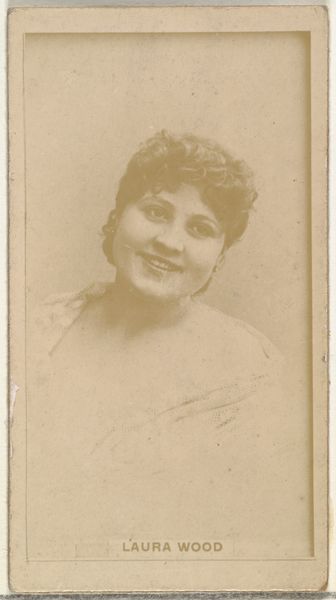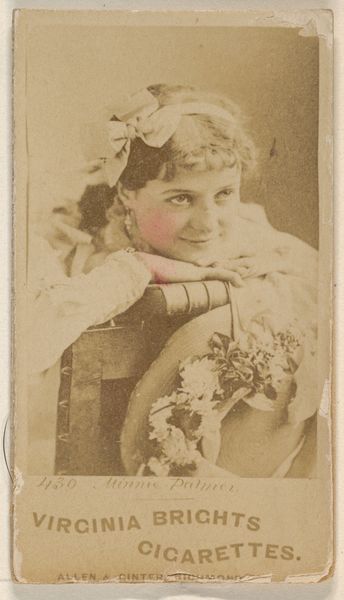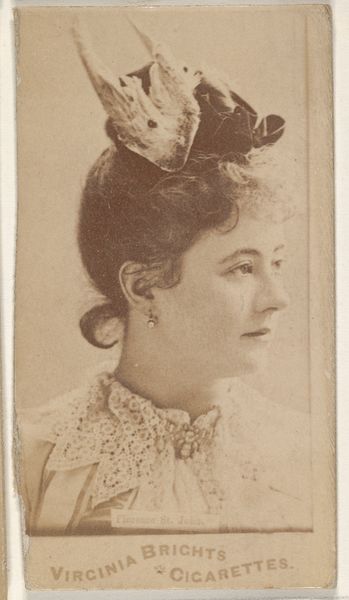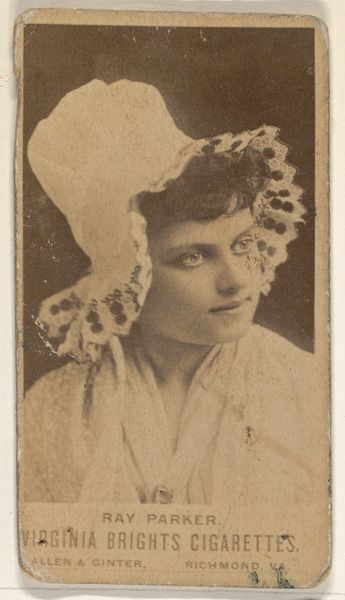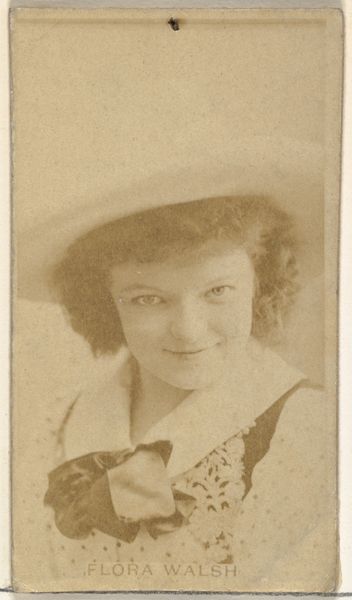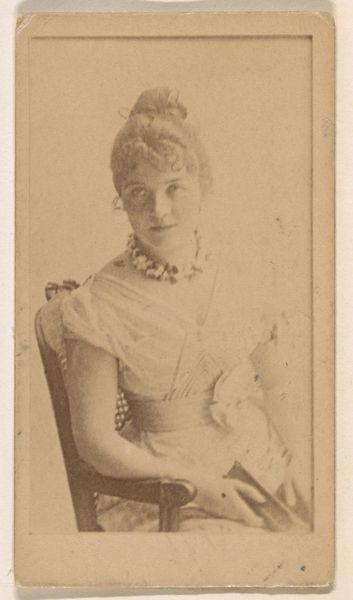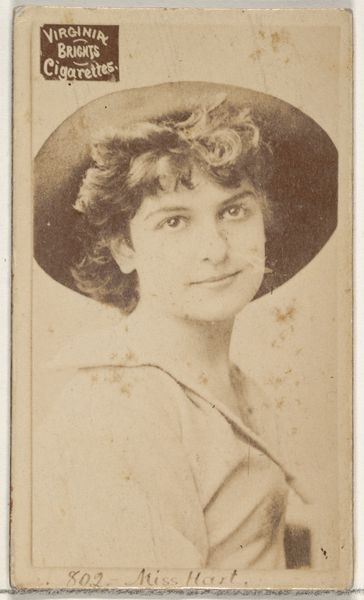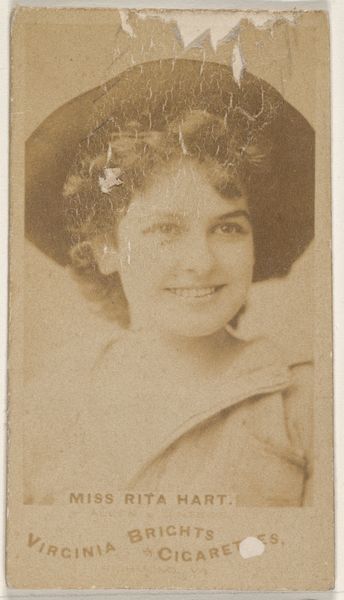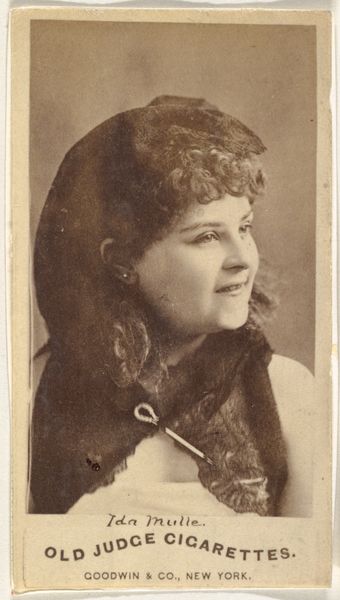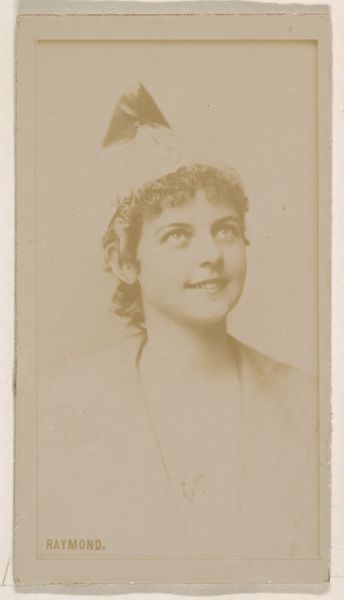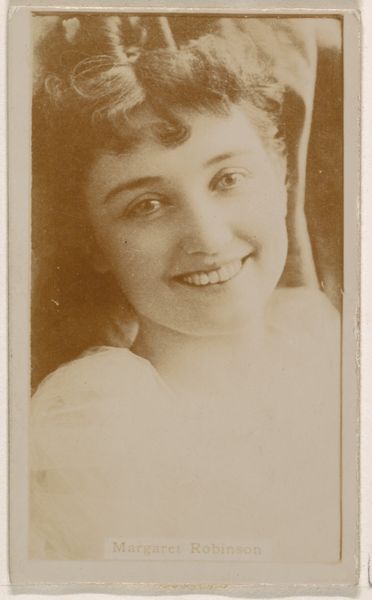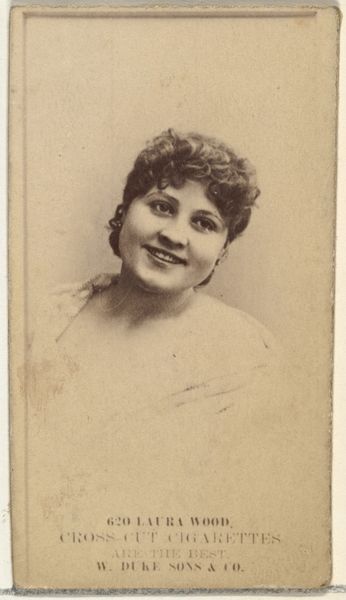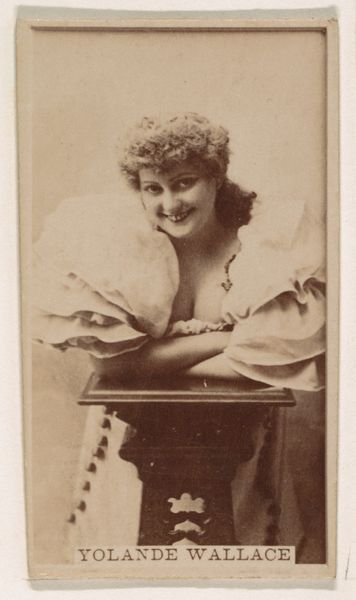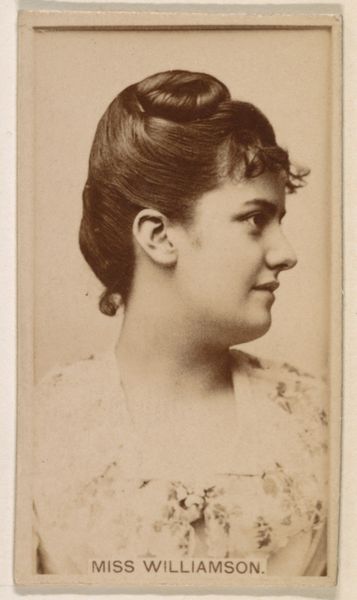
Card Number 619, Flora Walch, from the Actors and Actresses series (N145-3) issued by Duke Sons & Co. to promote Cross Cut Cigarettes 1880s
0:00
0:00
print, photography, albumen-print
#
portrait
# print
#
photography
#
19th century
#
albumen-print
Dimensions: Sheet: 2 11/16 × 1 3/8 in. (6.8 × 3.5 cm)
Copyright: Public Domain
Curator: This albumen-print card, dating back to the 1880s, is titled "Card Number 619, Flora Walch, from the Actors and Actresses series (N145-3)," produced by W. Duke, Sons & Co. to promote their Cross Cut Cigarettes. It resides here at The Met. Editor: It's surprisingly endearing. The warm sepia tone creates a sense of nostalgia, but something about the combination of the kitten and the bonnet feels almost… performative. Like a posed innocence manufactured for a particular male gaze. Curator: Exactly! The commodification of Flora Walch as both actress and object of desire becomes deeply entwined with the branding of Cross Cut Cigarettes. We must consider the broader power dynamics. Cigarette cards, you see, acted as vehicles for disseminating cultural values and ideals, predominantly to a male consumer base. This portrayal isn't just an innocent portrait; it reinforces Victorian constructs of femininity. Editor: The inclusion of the kitten plays into those constructs as well. Purity, docility—all coded through this tiny animal held possessively in her arms. Were actresses in this era caught in a double bind? They had agency on stage, but outside it, like with this print, they could easily become the property of companies like Duke Sons & Co. Curator: Undoubtedly. The mass production and circulation of images like this, as everyday ephemera, further solidified these gendered expectations. Flora Walch, the individual, becomes less important than what she represents: a desirable fantasy packaged alongside nicotine. The social implications were staggering. Consider who consumed these images, where, and what beliefs were thus normalized. Editor: It’s eerie, in a way, seeing a pocket-sized celebrity endorsement today. You're right; understanding that this photograph was essentially viral marketing reshapes the context entirely. Suddenly it stops feeling 'quaint' and raises critical questions about how actresses, and women in general, are still branded today. Curator: Indeed. These tiny objects served to construct narratives of desirability and femininity during that era. It's in how these power dynamics are rendered ordinary, within everyday experience, that the success, and the potential harm, of such imagery lies. Editor: So, in examining what appears as a sentimental portrait of an actress, we uncover a deeper exploration of celebrity, consumerism, and gender, all wrapped up in this little rectangle. Curator: Precisely. And recognizing these historical processes illuminates how similar forms of marketing function, still, today.
Comments
No comments
Be the first to comment and join the conversation on the ultimate creative platform.
